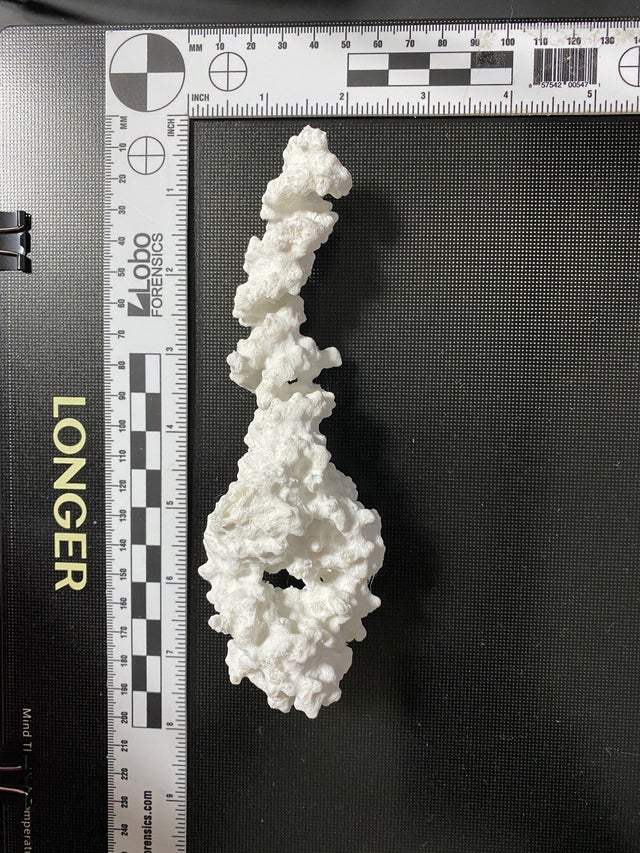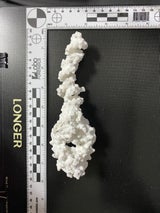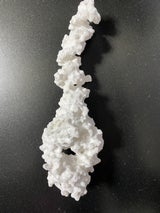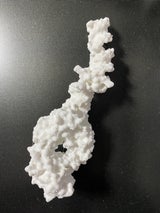- 3D Printed Molecules
- >
- Biology
- >
- AAA+ Proteases 3D Printed Model
AAA+ Proteases 3D Printed Model
SKU:
1HR2
$20.00
$20.00
Unavailable
per item
3D Printed Paintable Molecule Model for Science - AAA+ proteases are ATP-powered molecular motors that thread protein chains through a hole. Printed in white PLA only.
August 2006 Molecule of the Month - https://www.rcsb.org/structure/1HR2
Suitable for ages 5 and above
Each model is individually 3D Printed using Eco-Friendly PLA Bio-Plastic.
Color: WHITE - The model is "white" so that you can enjoy painting or coloring in your model if you wish.
DOI Citation:Classification: RNA
Mutation(s): No
Literature Citation:
Ormo, M., Cubitt, A.B., Kallio, K., Gross, L.A., Tsien, R.Y., Remington, S.J. (1996) Crystal structure of the Aequorea victoria green fluorescent protein Science 273: 1392-1395 doi: 10.1126/science.273.5280.1392
This 3D Printed model of the August 2006 Molecule of the Month is in the PDB Data Bank
How would you make a protein cutting machine that would be safe to use inside a cell? Digestive proteases like trypsin and pepsin are small and efficient–they diffuse up to proteins and start cutting. This would never work inside a cell. The cell needs to have more control, so that only obsolete or damaged proteins are destroyed. The AAA+ proteases are one solution to this problem. They use two tricks to ensure that only certain proteins are destroyed. First, they hide the protein destruction machinery inside a closed container, and second, they use a special protein pump to feed proteins into this destruction chamber.
Heat Shock
Currently, the most complete structures of AAA+ proteases are for a bacterial protein called HslUV (short for Heat Shock Locus gene products U and V). One example is shown here, from PDB entry 1yyf . It is composed of two types of protein subunits. The protease subunits are arranged into a hollow barrel at the center, colored blue here. The active sites are hidden on the inside of the barrel. The AAA+ ATPase subunits, colored red and orange here, control the entry at either end of the complex. They form the pump that feeds proteins inside. HslUV is one of many heat shock proteins that are built when the cell heats up to dangerous levels. Heat can unfold proteins and cause unwanted aggregation, so a collection of heat shock chaperones and proteases are built to refold proteins into their proper form or dispose of heat-damaged proteins.
Proteasome
Our cells build a more complex version of HslUV: the proteasome. It has a larger destruction chamber at the center, composed of a stack of four ring-shaped protease complexes. At either end, there is a more complicated mechanism that looks for proteins attached to ubiquitin, and then uses a similar AAA+ ATPase to thread the protein into the chamber.
How would you make a protein cutting machine that would be safe to use inside a cell? Digestive proteases like trypsin and pepsin are small and efficient–they diffuse up to proteins and start cutting. This would never work inside a cell. The cell needs to have more control, so that only obsolete or damaged proteins are destroyed. The AAA+ proteases are one solution to this problem. They use two tricks to ensure that only certain proteins are destroyed. First, they hide the protein destruction machinery inside a closed container, and second, they use a special protein pump to feed proteins into this destruction chamber.
Heat Shock
Currently, the most complete structures of AAA+ proteases are for a bacterial protein called HslUV (short for Heat Shock Locus gene products U and V). One example is shown here, from PDB entry 1yyf . It is composed of two types of protein subunits. The protease subunits are arranged into a hollow barrel at the center, colored blue here. The active sites are hidden on the inside of the barrel. The AAA+ ATPase subunits, colored red and orange here, control the entry at either end of the complex. They form the pump that feeds proteins inside. HslUV is one of many heat shock proteins that are built when the cell heats up to dangerous levels. Heat can unfold proteins and cause unwanted aggregation, so a collection of heat shock chaperones and proteases are built to refold proteins into their proper form or dispose of heat-damaged proteins.
Proteasome
Our cells build a more complex version of HslUV: the proteasome. It has a larger destruction chamber at the center, composed of a stack of four ring-shaped protease complexes. At either end, there is a more complicated mechanism that looks for proteins attached to ubiquitin, and then uses a similar AAA+ ATPase to thread the protein into the chamber.





